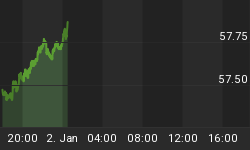Wall Street plunged on Thursday with tech stocks--the key drivers of months of rallying--falling on weak economic data, but this may not be a full-on “correction”, even though the top tech kings lost some $44 billion in wealth in a single day.
The tech-heavy Nasdaq closed at 12,053 on Wednesday, suffering major losses the following day, to close at 11,465. By Friday morning, the Nasdaq was still shedding points, with another 300 shaved off.
The Dow had lost nearly 200 points in addition to its Thursday losses, by the time of writing, and the S&P 500 was down another 50 points on Friday morning EST.
The biggest tech losers on Thursday were Apple (down 8%), Microsoft (down 6.2%), Amazon (down 4.6%), Nvidia (down 9.3%), AMD (down 8.5%), Tesla (down 9%).
Even bitcoin is steadily shedding value, never sure if it’s tracking the market or moving in the opposite safe haven direction along with gold. But in this case, even safe haven favorite gold is down Friday, currently going for $1,924 an ounce. Gold witnessed its third consecutive session loss on Thursday, and was setting up for a 2% weekly loss Friday.
The driving force behind the losses? Allegedly, economic data, which tends to captivate the markets for a few days.
With no additional federal rescue legislation in sight, during the last week of August another 881,000 Americans filed for first-time unemployment benefits.
Even though the number is the lowest weekly total since the start of the pandemic, it is still four times higher than pre-pandemic figures.
The $600-weekly jobless benefit supplement expired in July, and in the interim, a lot of small businesses have already blown through the money they received through the federal Paycheck Protection Program (PPP), with many forced to announce new layoffs.
The Commerce Department reported that the U.S. trade deficit soared to $63.6 billion in July, the largest monthly deficit since July 2008, in the throes of a major recession. The deficit increase was driven by a record 10.9% increase in imports, which rose to $231.7 billion.
Also this week, the Congressional Budget Office (CBO) said that federal debt was expected to outpace GDP by the end of 2021 for the first time since the 1940s. In previous projections by the CBO from January, that timeline was set for 2030.
But even with all the dire economic data that came out on Thursday, the weekly jobs report released on that morning actually exceeded expectations, suggesting that wasn’t the catalyst for the massive losses in the tech sector. Even Friday’s monthly report was better than expected, even if still largely bad news.
Overall, it still looks like an economic recovery, and the market doesn’t like the uncertainty surrounding more stimulus, the intensifying presidential election campaign and the prospects of the election itself.
The distinctly tech-driven nature of Thursday’s stock rout may have more to do with rising sentiments that the sector is too heavily overbought than with economic data.
Speaking to CNBC, Miller Tabak’s Matt Maley said he thought we would see “more downside because when tech stocks get this overbought they tend to overshoot on the downside”.
By Michael Kern for Safehaven.com
















